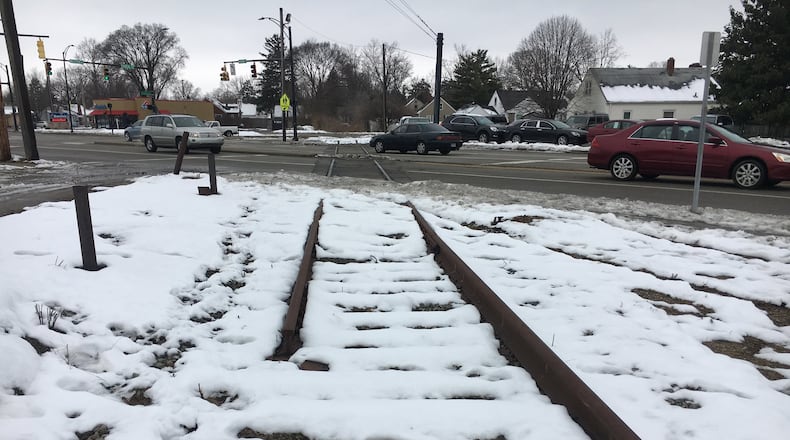Ryan Smith, 26, and Josef Portugal, 21, who both live within blocks of the first phase, are looking forward to when they can use the 10-foot-wide bike path.
“I think it will be great, and much safer,” for bicyclists, Smith said.
“We don’t have cars, so we walk everywhere,” Portugal said. “Especially the lower-income people, since they don’t have cars or transportation.”
It’s also good recreation, and physical fitness, they both said.
The first segment abuts Wilson Park and its sprayground, as well as the West Side Little League. It finishes just across Eaton Avenue from the Flub’s ice cream shop.
Some of the areas between the first segment and the Great Miami River are heavily wooded, so when that part is built, bikers and hikers will have the impression they are no longer in a city.
Rollerblading will be allowed, but no motorized vehicles, under terms of the grants.
The Phase I segment includes an approximately 120-year-old deteriorating wooden railroad bridge that likely will be replaced by a new structure, said Allen Messer, project manager for the bikeway.
Unlike the existing bridge, the replacement bridge will not have a pillar in the waterway that can block logs and debris, causing flooding upstream.
The bridge will account for about two-thirds of the first segment’s total cost.
The city won two grants from the Ohio Department of Natural Resources that will finance the first phase, one for $500,000 and another for $59,426.
The city is in the process of closing on the rail-line property with CSX. The line used to link the paper mill, which now is proposed to become a gigantic indoor sports complex and convention center called Spooky Nook, to other rail lines, to transport supplies in to the mill and products out.
“We would have normally started probably at the river,” Messer said. “But because Spooky Nook is still under design, we didn’t know how it would connect into that.”
The next stages likely will be ones going toward the proposed Spooky Nook at Champion Mill sports complex and convention center.
About 10,000 people live within half a mile of just the project’s first phase, Garuckas said. Plus, when Spooky Nook opens, the bikeway will let patrons take rides, perhaps visiting Flub’s, or other businesses in that area.
After hearing feedback from residents that the city should spend as little as possible on the pathway, Hamilton is breaking construction into phases as a way to try to maximize the grants it can win in future years from the state and elsewhere to pay for construction.
Meanwhile, some of the beltline’s construction costs will be included in next year’s reconfiguration of Main Street with Cereal Avenue, Haldimand Avenues and other roadways.
“We’re being very opportunistic about trying to stretch the public’s dollar,” Garuckas said.
About the Author
